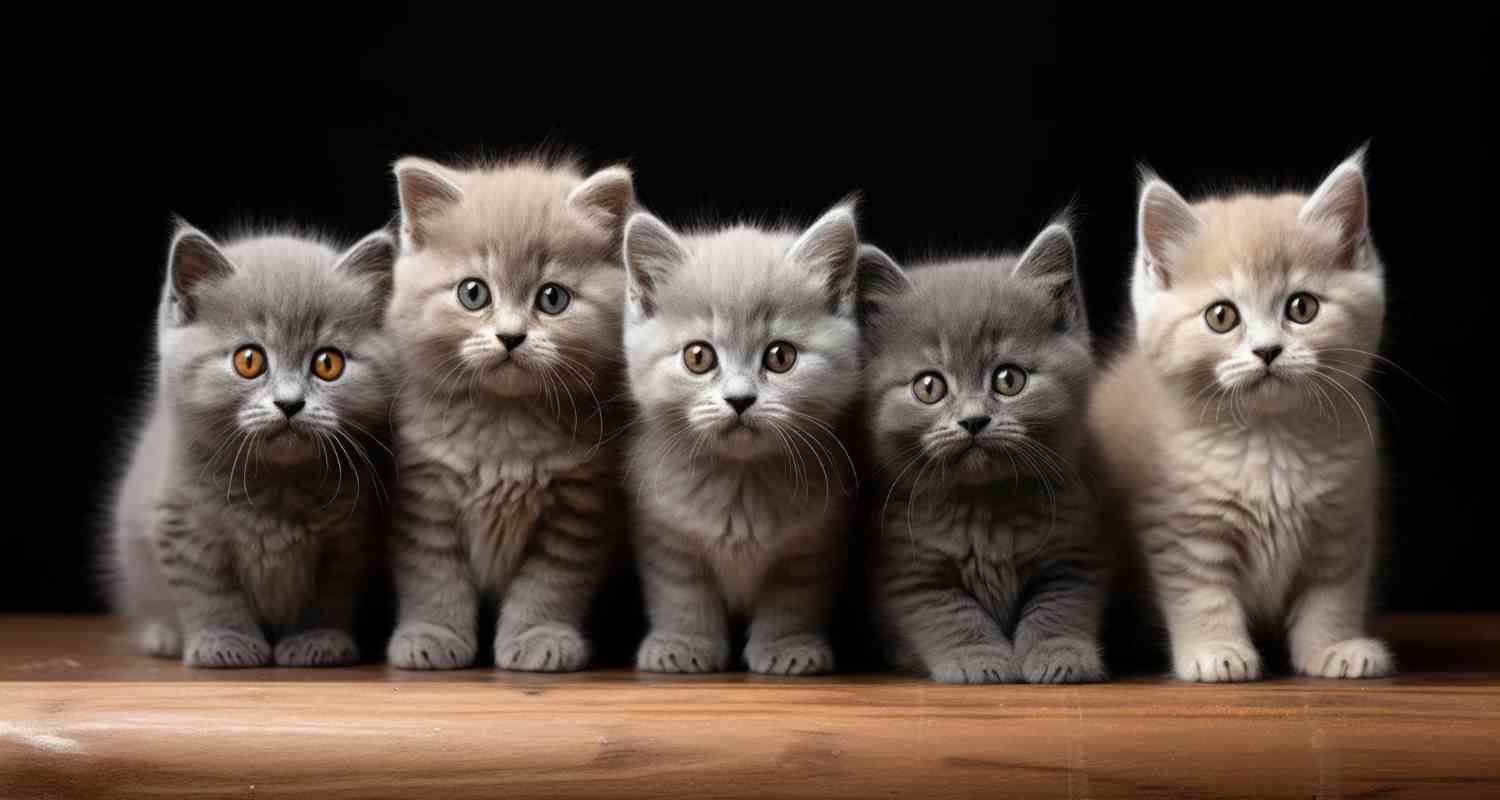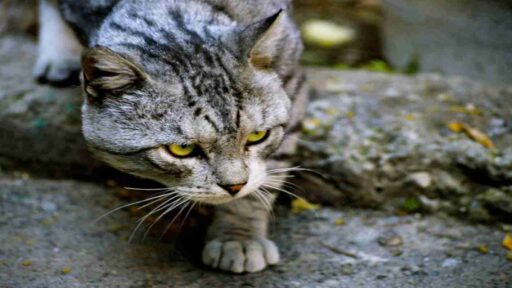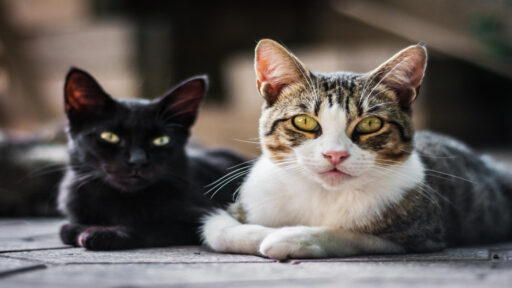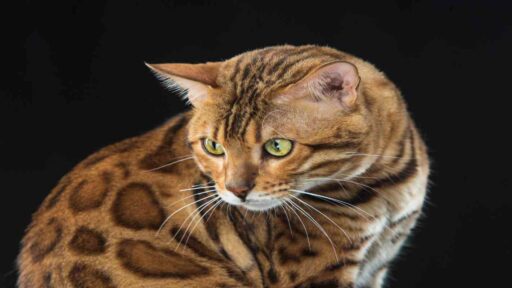what breed is my cat? To determine the breed of your cat, you can consider various factors such as physical characteristics, coat color and pattern, and behavioral traits. If you’re unsure about your cat’s breed, you can consult with a veterinarian or a professional animal behaviorist who may be able to provide insights based on observation and analysis. Additionally, there are genetic testing kits available that can help identify your cat’s breed through DNA analysis.
What breed is my cat?
To determine your cat’s breed, consider the following steps:
- Physical Characteristics: Observe your cat’s body shape, size, and features such as ear shape, eye color, and tail length.
- Coat Color and Pattern: Note the color, pattern, and texture of your cat’s fur. Certain breeds are known for specific coat colors and patterns.
- Facial Features: Look at your cat’s face for distinctive characteristics such as the shape of the eyes, nose, and muzzle.
- Behavioral Traits: Consider your cat’s personality and behavior traits. Some breeds have specific temperaments and tendencies.
- Consultation: Consult with a veterinarian or a professional breeder who may be able to provide insights based on their experience and knowledge.
- Genetic Testing: Consider genetic testing kits that can analyze your cat’s DNA to determine its breed heritage.
Coat Length
While coat length can provide some clues about a cat’s breed, it is not the sole determinant. Cats with long coats are often associated with breeds like the Maine Coon or Persian, while short-haired breeds include the American Shorthair or Siamese. However, many mixed-breed cats can also have varying coat lengths, making it challenging to determine breed solely based on this factor. It’s best to consider other characteristics such as body shape, facial features, and behavioral traits when attempting to determine your cat’s breed.
- Hairless cats have no fur.
- Shorthair cats have short fur across the entire body.
- Medium hair cats have longer fur around the mane, tail, and/or rear.
- Longhair cats have long, fluffy fur.
what breed is my cat? -Coat Colors
Coat colors refer to the specific hues and shades present in your cat’s fur. Cats can come in a wide variety of coat colors, including solid colors like black, white, or gray, as well as patterns such as tabby, tortoiseshell, or calico. Coat colors can be influenced by genetics, with certain breeds being known for specific color variations
Coat colors can provide some clues about a cat’s breed, as certain breeds are known for specific coat colors and patterns. For example:
- Siamese cats are known for their distinctive “point” coloration, with darker fur on their ears, face, paws, and tail.
- Abyssinian cats typically have a ticked tabby pattern, with each hair alternating between light and dark bands of color.
- Maine Coon cats come in various colors, but they are often seen in solid or tabby patterns with a range of colors such as brown, red, and cream.
While coat colors can help identify a cat’s breed, they should be considered alongside other factors such as body shape, facial features, and temperament for a more accurate assessment.
Colors types
Cats can come in a wide variety of colors, including:
- Black
- White
- Gray (also known as blue)
- Brown (including shades like chocolate and cinnamon)
- Red (commonly referred to as orange or ginger)
- Cream
- Blue-gray
- Fawn
- Silver
- Creamy-white
These are just a few examples of the many colors that cats can have. Additionally, cats can have various patterns such as tabby, tortoiseshell, calico, and pointed.
Read more about the cat’s colors
what breed is my cat? -Coat Patterns
Coat patterns refer to the arrangement of colors and markings on a cat’s fur. Some common coat patterns include:
- Tabby: Characterized by stripes, swirls, or spots on a lighter background.
- Tortoiseshell: Patchy mix of black and orange (or red) fur.
- Calico: Similar to tortoiseshell but with white patches mixed in.
- Bicolor: Two distinct colors, often with white and another color in large patches.
- Solid: One uniform color across the entire body.
- Pointed: Light-colored body with darker “points” on the ears, face, paws, and tail.
- Ticked: Each individual hair has bands of different colors, creating a speckled or “salt and pepper” appearance.
- Smoke: Dense color at the base of the fur with lighter tips, giving a smoky or shaded effect.
Markings
Markings refer to the distinctive patterns, spots, stripes, or other features on a cat’s fur that contribute to its overall appearance. Some common markings include:
- Stripes: Lines of darker color running along the length of the body, often seen in tabby cats.
- Spots: Round or oval-shaped patches of color scattered across the fur.
- Ticking: Fine lines or speckles of color on each individual hair, giving a mottled appearance.
- Blaze: A vertical stripe of color running down the center of the face, often seen in bicolor cats.
- Mask: Dark coloring on the face, particularly around the eyes and nose, seen in pointed or masked breeds.
- Points: Darker coloration on the ears, face, paws, and tail, commonly seen in pointed breeds like Siamese cats.
- Mitted: White markings on the paws resembling gloves or mittens.
- Van: Color confined to the ears, tail, and a few other small areas, with the majority of the body being white.
Feature Colors
Feature colors in cats refer to specific colors or patterns found on certain parts of their body or features. Some common feature colors include:
- Point Coloration: This refers to darker coloration on the ears, face, paws, and tail, commonly seen in breeds like Siamese cats.
- Blaze: A vertical stripe of color running down the center of the face, often seen in bicolor cats.
- Mask: Dark coloring on the face, particularly around the eyes and nose, commonly seen in pointed or masked breeds.
- Tabby Markings: These can include stripes, swirls, or spots on a lighter background, found on various parts of the body, including the back, sides, and legs.
- Ticking: Fine lines or speckles of color on each individual hair, giving a mottled appearance, often seen in breeds like the Abyssinian.
Unique Identifiers
Unique identifiers in cats refer to distinguishing features or characteristics that set them apart from others. These can include:
- Facial Markings: Such as a distinctive blaze, mask, or specific patterns around the eyes or nose.
- Coat Patterns: Unique patterns like tabby stripes, tortoiseshell patches, or calico coloration.
- Body Shape: Certain breeds may have distinct body shapes or proportions that set them apart, such as the muscular build of a Bengal cat or the long, slender body of a Siamese.
- Tail Length or Shape: Some cats may have unusually long or short tails, or tails with unique shapes or features.
- Eye Color: Unusual or striking eye colors can also serve as unique identifiers, such as the vivid blue eyes of a Siamese or the heterochromatic eyes (two different colored eyes) of some cats.
- Ear Shape: Certain breeds have distinctive ear shapes or characteristics, such as the tufted ears of a Maine Coon or the folded ears of a Scottish Fold.
Determining Sex
Determining the sex of a cat can typically be done by examining the genital area. Here are some general guidelines:
- Male Cats (Tomcats): Look for the presence of testicles, which are located beneath the anus. In unneutered males, the testicles are usually more prominent and can be felt as firm, rounded structures.
- Female Cats (Queens): Look for the absence of testicles. Instead, you may see the presence of a genital opening located just below the anus. In some cases, you may also notice a slight distance between the anus and the genital opening.
It’s important to note that determining the sex of very young kittens can be more challenging, and it may require closer examination by an experienced individual
Read more about the cat’s breed
what breed is my cat? faqs
How do I know the breed of my cat?
Determining your cat’s breed can be tricky. Observe physical traits like body shape and ear shape. Note the color, pattern, and texture of the fur. Consider your cat’s personality and behavior. Consult a veterinarian or breeder for insights. Genetic testing kits can also help identify breed heritage.
How do I know when to breed my cat?
Consider these factors when determining when to breed your cat:
- Monitor your cat’s age and ensure maturity.
- Prioritize your cat’s health with a vet check-up.
- Research breed standards and guidelines.
- Consider genetic testing for hereditary conditions.
- Watch for signs of mating behavior in your cat.
- Choose a suitable mate for breeding.
- Provide a safe environment for breeding and pregnancy.
Does every cat have a breed?
Not every cat has a specific breed. Many cats are mixed breeds or have unknown ancestry. These cats are often referred to as domestic cats or domestic shorthairs/domestic longhairs. While purebred cats have distinct breeds with established standards, mixed-breed cats come in a wide variety of shapes, sizes, and coat colors/patterns. Each cat, regardless of breed, is unique and special in its own way.
How do you identify a feline?
You can identify a feline by observing its physical characteristics, such as body shape, ear shape, eye color, and coat color/pattern. Additionally, you can consider the cat’s behavior and temperament, as certain breeds may have distinct personality traits. If you’re unsure about a cat’s breed, consulting with a veterinarian or experienced breeder can provide more insights.




